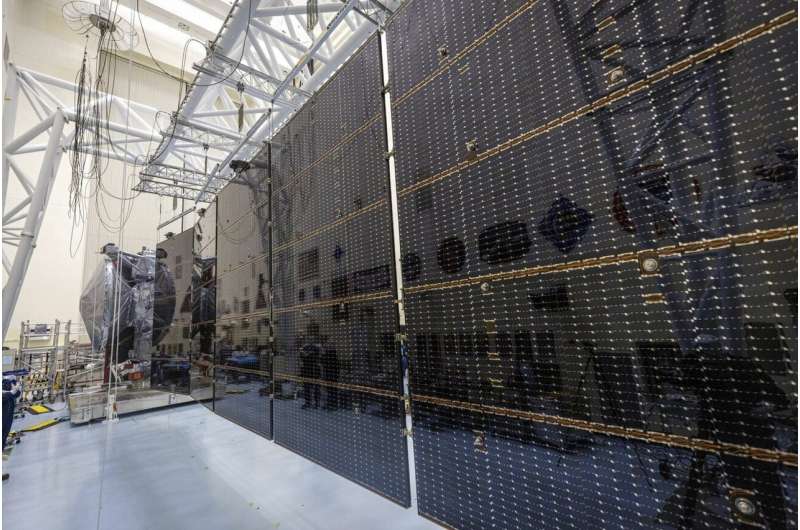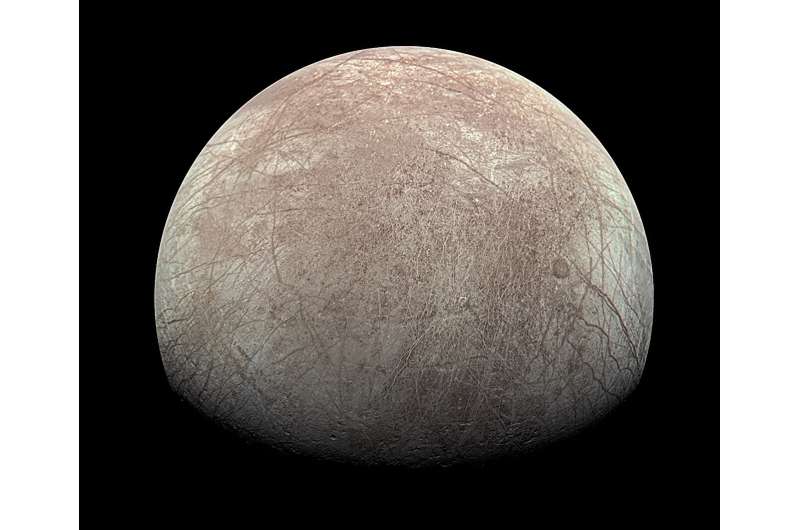This article has been reviewed according to Science X's editorial process and policies. Editors have highlighted the following attributes while ensuring the content's credibility:
fact-checked
reputable news agency
proofread
NASA spacecraft to study Jupiter moon's underground ocean cleared for October launch

NASA on Monday approved next month's launch to Jupiter's moon Europa after reviewing the spacecraft's ability to withstand the intense radiation there.
Questions about the reliability of the transistors on the Europa Clipper spacecraft arose earlier this year after similar problems cropped up elsewhere. With the tight launch window looming, NASA rushed to conduct tests to verify that the electronic parts could survive the $5 billion mission to determine whether the suspected ocean beneath Europa's icy crust might be suitable for life.
Liftoff remains scheduled for Oct. 10 aboard a SpaceX Falcon Heavy rocket. NASA has three weeks to launch the spacecraft before standing down for more than a year to await another proper planetary alignment; the spacecraft needs to swing past Mars and then Earth for gravity assists.
Project manager Jordan Evans said the transistors—located in circuits across the entire spacecraft—are expected to degrade when Europa Clipper is exposed to the worst of the radiation during the 49 flybys of the moon. But they should recover during the three weeks between each encounter, said Evans of NASA's Jet Propulsion Laboratory.
Teams from labs across the country came to that conclusion following round-the-clock testing over the past four months.

The project has "high confidence we can complete the original mission for exploring Europa as planned," Evans said. "We are ready for Jupiter."
It will take six years for Europa Clipper to reach Jupiter, where it will orbit the gas giant every three weeks. Dozens of flybys are planned of Europa as close as 16 miles (25 kilometers), allowing cameras and other instruments—including ice-penetrating radar—to map virtually the entire moon.
Europa Clipper is the biggest spacecraft ever built by NASA to investigate another planet, spanning more than 100 feet (30 meters) with its solar panels unfurled.
© 2024 The Associated Press. All rights reserved. This material may not be published, broadcast, rewritten or redistributed without permission.




















